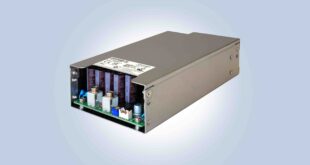Tackling corrosion issues and developing new materials in the wave, tidal and offshore wind sectors across Europe could save up to £74 billion for developers and create up to £72 billion of supply chain opportunities by 2050, according to two new reports.
Commissioned by the NeSSIE project, the reports investigated the economic potential of anti-corrosion solutions and the development of new materials in the offshore renewables market.
Corrosion is an important concern for offshore energy developers. All marine structures face corrosion problems impacting on the operations and maintenance (O&M) costs along the global lifecycle.
In the case of offshore wind farms, the O&M costs are typically around 15 – 30% of the total lifecycle, with corrosion issues a significant factor in these costs.
The reports found that based on offshore renewable deployment estimations, anti-corrosion solutions and new materials could see potential developers saving over £14 billion for wave and tidal energy projects in the EU by 2050 and potentially over £60 billion of savings for offshore wind projects.
For the anti-corrosion supply chain, the wave and tidal energy markets could potentially lead to over £22 billion of projects in the wider EU by 2050 and over £50 billion for offshore wind projects.
Jan Reid, team leader in the energy and clean technologies team within Scottish Enterprise, said: “This early work is really encouraging.
“We can see there is a tremendous economic prize for the EU offshore supply chain in tackling this challenge and supporting the EU to decarbonise the energy sector.
“The key to unlocking this opportunity is developing investable demonstration projects that will prove the technological solutions.
“Working together with Stakeholders, we at NeSSIE are excited to be involved in the development of anti-corrosion solution demonstration projects.”
Stefano Valentini, NeSSIE ASTER project manager, who led on the state of the art study commented: “It’s clear from this early work, that there are a wide range of technical solutions that can be deployed to great effect in the offshore renewables sector.
“The EU supply chain is at the forefront of subsea excellence and we are confident this will bring forth excellent solutions that will see the cost of energy coming down in offshore renewables.”
Henry Jeffrey, of University of Edinburgh, who led on the economic report observed: “The Policy and Innovation Group at the University of Edinburgh has been working in this sector for many years and has developed a range of models for assessing the economic potential for offshore renewables.
“This type of information is critical to get the wider value chain engaged and this report presents a significant opportunity for the EU’s world class subsea value chain to develop products and services leading to high value job creation.”
The reports contribute to NeSSIE’s overall objective of developing three investable demonstration projects in offshore renewables focused on corrosion and materials.
The projects will utilise the existing EU subsea supply chain and their knowledge to develop commercial solutions.
Commenting on today’s announcement, Scottish Government Minister for Business, Energy and Innovation, Paul Wheelhouse added: “Scotland leads the way in renewables, with the equivalent of 54% of our electricity consumption generated from renewable sources in 2016.
“The renewable energy sector currently supports around 26,000 jobs with a turnover of £5 billion, however there is still considerable potential for expansion within the sector and I’m determined new technologies, developed in Scotland or in partnership with others, will play a central part in delivering this.
“We recently published Scotland’s Energy Strategy, and this sets out our ambition to build a modern, clean, integrated energy system, with renewables at its heart.
“By collaborating with our European partners we are demonstrating the wealth of experience, expertise and natural assets Scotland has to offer, laying the groundwork for the continued growth of the offshore renewables sector.”
Both reports are available HERE.
 Engineer News Network The ultimate online news and information resource for today’s engineer
Engineer News Network The ultimate online news and information resource for today’s engineer





